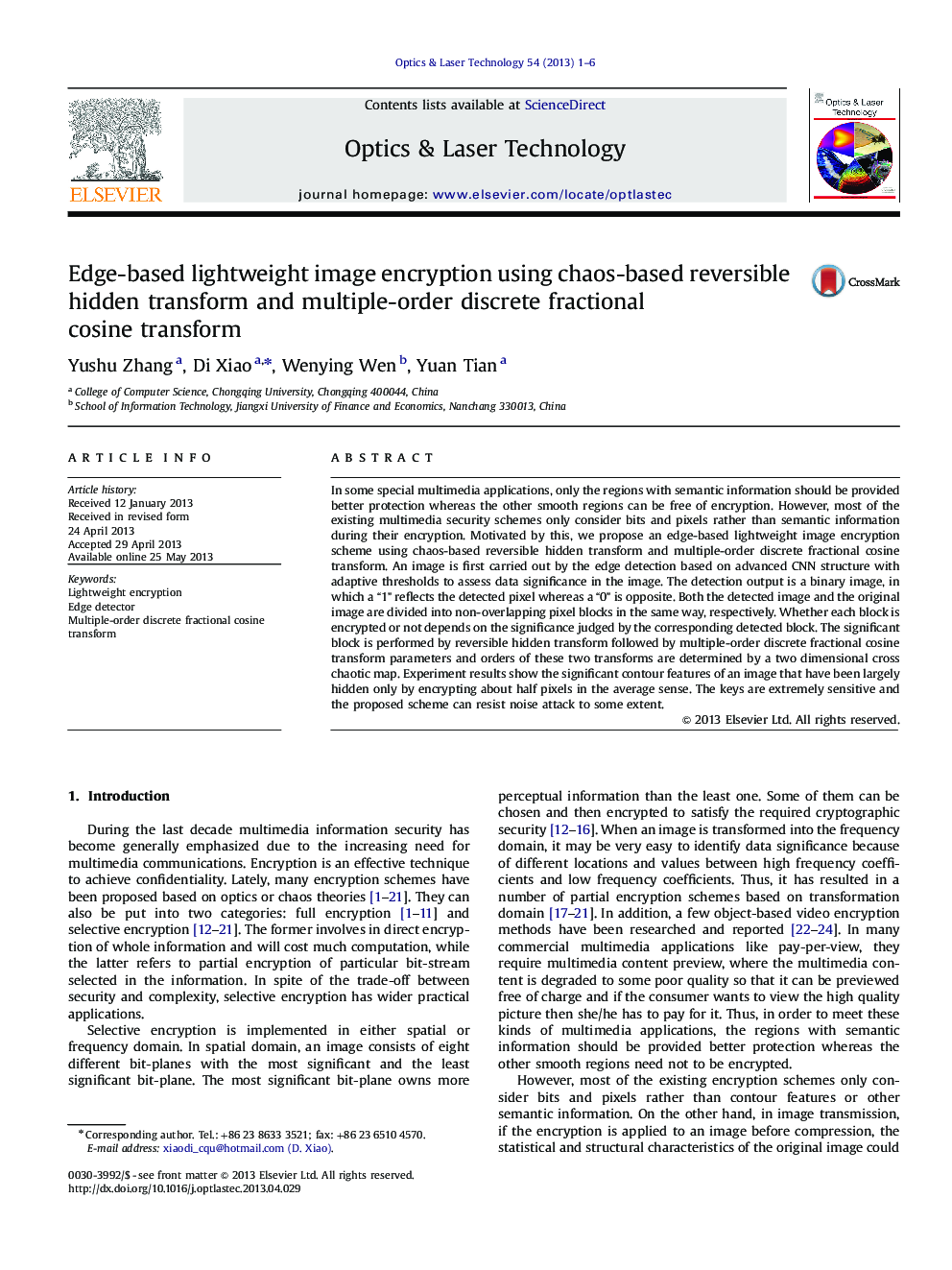| Article ID | Journal | Published Year | Pages | File Type |
|---|---|---|---|---|
| 7130642 | Optics & Laser Technology | 2013 | 6 Pages |
Abstract
In some special multimedia applications, only the regions with semantic information should be provided better protection whereas the other smooth regions can be free of encryption. However, most of the existing multimedia security schemes only consider bits and pixels rather than semantic information during their encryption. Motivated by this, we propose an edge-based lightweight image encryption scheme using chaos-based reversible hidden transform and multiple-order discrete fractional cosine transform. An image is first carried out by the edge detection based on advanced CNN structure with adaptive thresholds to assess data significance in the image. The detection output is a binary image, in which a “1” reflects the detected pixel whereas a “0” is opposite. Both the detected image and the original image are divided into non-overlapping pixel blocks in the same way, respectively. Whether each block is encrypted or not depends on the significance judged by the corresponding detected block. The significant block is performed by reversible hidden transform followed by multiple-order discrete fractional cosine transform parameters and orders of these two transforms are determined by a two dimensional cross chaotic map. Experiment results show the significant contour features of an image that have been largely hidden only by encrypting about half pixels in the average sense. The keys are extremely sensitive and the proposed scheme can resist noise attack to some extent.
Keywords
Related Topics
Physical Sciences and Engineering
Engineering
Electrical and Electronic Engineering
Authors
Yushu Zhang, Di Xiao, Wenying Wen, Yuan Tian,
